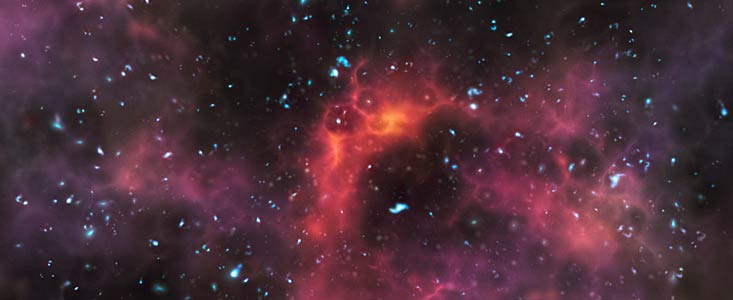

The Universe has a Murky Past
12 October 2011
Have you ever woken up one morning and seen that is very foggy and murky outside, but then the Sun comes up and it quickly burns away? Well, something similar happened to the Universe when it was very young.
When the first stars and galaxies formed, the Universe was filled with a thick fog of hydrogen gas that stopped starlight from travelling across space. The picture shown above, which an artist drew on a computer, shows what these early galaxies looked like.
The Universe’s first stars were huge. "About 100 times more massive than the Sun,” says astronomer Eros Vanzella. These stars gave off very strong UV light. (We know UV light as the stuff in sunlight that gives us sunburn.) This strong UV light eventually cleared the fog and allowed starlight to travel unobstructed across space.
Recently, astronomers used a telescope called the Very Large Telescope (or the VLT for short), which is based in Chile in South America, to look into the past and observe some of the galaxies from the time when the fog started to clear. (To learn how astronomers can look at galaxies from the past, click here.)
The astronomers noticed something surprising: In the short time between the oldest and youngest galaxies in their observing project being born, the Universe had gone from being very foggy to almost clear. This happened “quicker than astronomers previously thought,” says astronomer Laura Pentericci.
Cool fact: Although the galaxies that the astronomers observed are some of the first that ever formed, they were born when the Universe was between 780 million and 980 million years old! But since the Universe is 13.7 billion years old, it is still considered a baby before its 1 billionth birthday!
